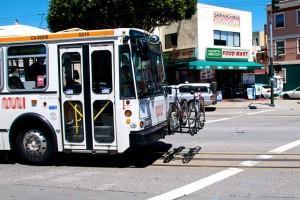 Last week BART- Bay Area Rapid Transit- workers went on strike. While the strike is now over, it did cause a host of problems and it also produced a lot of angst. But the strike brought with it the potential for another, more interesting, side story to develop: could the strike change—for the better—the way we interact with alternative transportation?
Last week BART- Bay Area Rapid Transit- workers went on strike. While the strike is now over, it did cause a host of problems and it also produced a lot of angst. But the strike brought with it the potential for another, more interesting, side story to develop: could the strike change—for the better—the way we interact with alternative transportation?
Most commuters in the Bay Area were rather frustrated and inconvenienced by the BART strike. BART workers went on strike for a wage increase and better safety measures. Beyond the ins and outs of the strike (which I won’t get into here, but here are two different takes on the demands), the strike meant that many commuters had to figure out alternative means to get from Point A to Point B. And for many commuters this meant using the bus, carpooling or biking to work for the first time. These strike-induced flirtations with alternative methods of transportation had the potential to do two very groundbreaking things: 1) expose a new crop of people to some of the key pieces of what makes a full transportation system; and 2) expose a new crop of people to the deficiencies in the system and perhaps turn them into advocates for alternative transportation infrastructure improvements.
BART’s ridership is about 40,000 people a day and about 39 percent of BART riders are low-income. Recent innovations in transit are great and have the potential to be revolutionary. But many of these innovations do not necessarily address issues with transportation equity— the fact that the majority of those who do not have access to a car or public transportation are low income and that the working poor spend a much higher portion of their income on commuting. Take, for example, Lyft, an on-demand rideshare app that is revolutionizing the idea of what a cab is–and whose clients are mostly middle-class, twenty-somethings. Or even bikeshare. While bikeshare has the potential to make a huge difference for those who are transportation disadvantaged, and while many cities are doing a great deal to consider how to better reach low-income potential riders, cities could be even more proactive with their efforts by, for example, allowing monthly payment plans for membership. Tech companies have started hiring private buses to take their workers from their homes to the office park suburbs—another option that’s great for certain groups but does little to address the bus system’s wider failings.
Which brings us back to the BART strike. Though my sample size is rather small (my co-workers and articles written about the strike), people who never rode the bus before did so due to the strike. In doing so, many of these novice riders learned that the bus ain’t so bad. It is, in fact, a convenient, safe way to commute; there’s also something to be said about seeing the world through the bus’s windows, something you can’t do from a tube beneath the ground. But the bus isn’t perfect. It’s slow and often late. Many people also tried out casual carpool for the first time. Besides its interesting set of rules (if you like your morning NPR, that’s not a guarantee in someone else’s car) people figured out that carpooling isn’t so bad either—and they might just continue doing so long after the strike is over. And finally, biking proved to be an efficient way for people to get to work; except for the fact that not all the streets have bike lanes and there are lapses in network connectivity.
The recent innovations in transportation are benefiting a certain subset of the population. But with the BART strike and the exposure of more of the population to the wide expanse of alternative transportation– as well as its deficiencies– the alternative transportation consumer base is now wider than it’s ever been. And it might just be loud as well. Sure, it’s absolutely possible that in the wake of the strike people will opt for cars and never rely on BART, the bus or carpool again. Or, in light of their new experiences, people could not only advocate for a better BART, but a well-connected bike system, more opportunities to carpool and a more efficient bus system–changes that have the potential to impact all users. All these components are key to a meaningful alternative transportation system. If we look at the whole picture, and not just BART, we might be able to get a lot more out of this strike for everyone—riders and laborers—than was ever thought to be an option.




